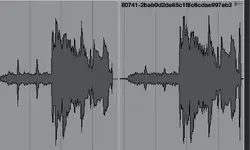M
milosrogan
New member
Hello,
I just joined this forum and thought about asking you something about my song.
I just finished with recording, mixing and mastering my first song. For a moment I thought it sounded decent, until it went live on streaming platforms. Hi hats are completely ruined on Tidal, on some other platforms little less, but far away from original. Here's original .wav audio if you want to take a listen: https://drive.google.com/file/d/1fk0rXqyCNrSWt-X-ik1vlEO7LjjpgWdd/view?usp=sharing
And then:
- iTunes: Somewhat closest to original audio
- Spotify: Noticeably distorted and compressed hi hats
- Tidal: Completely distorted song
(I'm sorry if links from streaming platforms are maybe forbidden on forum? Please notify me if that's the case...)
Do you have any idea why is this? Should I cut out everything from 17k and up, 'cause my overheads have some frequencies going on there? Could this be because of poor limiting and level peaks?
I would really appreciate your help!
Thanks in advance,
Miloš
I just joined this forum and thought about asking you something about my song.
I just finished with recording, mixing and mastering my first song. For a moment I thought it sounded decent, until it went live on streaming platforms. Hi hats are completely ruined on Tidal, on some other platforms little less, but far away from original. Here's original .wav audio if you want to take a listen: https://drive.google.com/file/d/1fk0rXqyCNrSWt-X-ik1vlEO7LjjpgWdd/view?usp=sharing
And then:
- iTunes: Somewhat closest to original audio
- Spotify: Noticeably distorted and compressed hi hats
- Tidal: Completely distorted song
(I'm sorry if links from streaming platforms are maybe forbidden on forum? Please notify me if that's the case...)
Do you have any idea why is this? Should I cut out everything from 17k and up, 'cause my overheads have some frequencies going on there? Could this be because of poor limiting and level peaks?
I would really appreciate your help!
Thanks in advance,
Miloš
Last edited:

 Because when I was testing my song before publishing it, I did export at 128kbps just to see if it's gonna break or something. It sounded just as you would expect a 128kbps to sound, little bit of a lower quality, but nothing like this version on streaming platforms....
Because when I was testing my song before publishing it, I did export at 128kbps just to see if it's gonna break or something. It sounded just as you would expect a 128kbps to sound, little bit of a lower quality, but nothing like this version on streaming platforms.... 